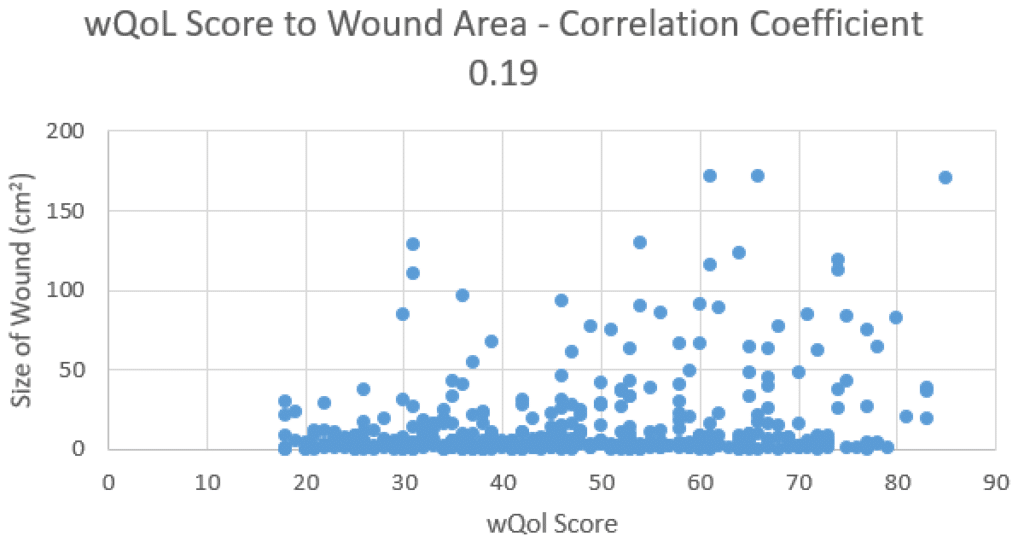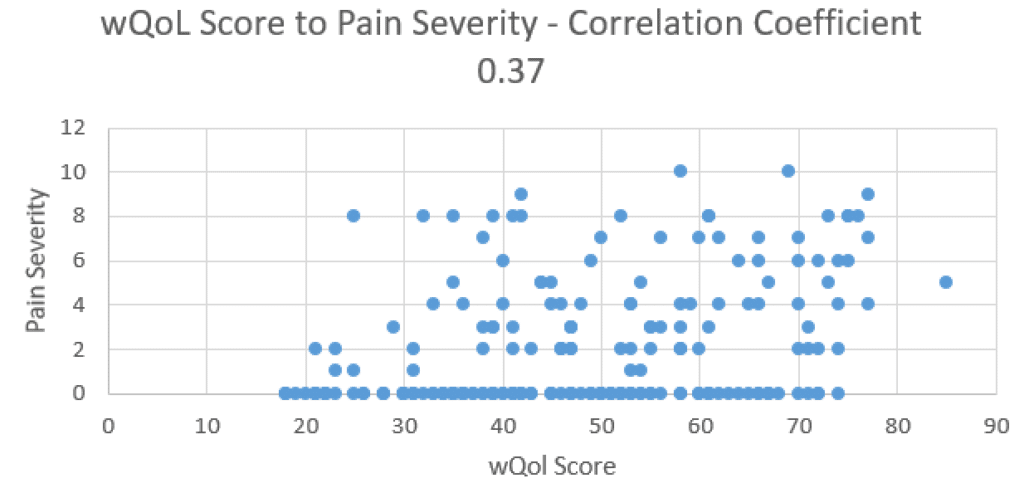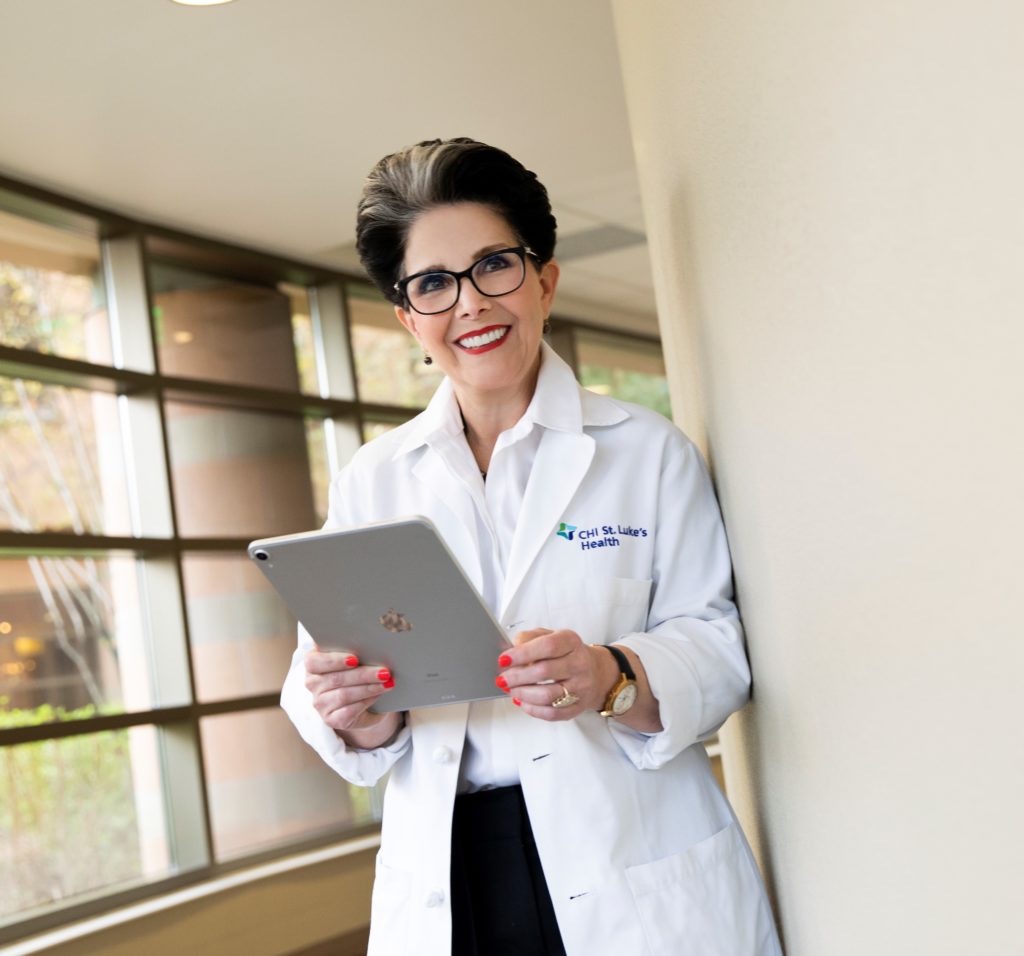By Caroline Fife
There is lot of interest in surrogate measures of wound outcome to capture important aspects of treatment beyond wound closure. Because it provides insight into the patient’s experience, Quality of Life (QOL) is an obvious potential surrogate for wound outcome. We know that wounds cause tremendous suffering, so it stands to reason that getting them healed would improve patient quality of life. And, everyone is talking about the importance of patient quality of life!
The Institute for Health Services Research in Dermatology and Nursing (IVDP) in Hamburg, Germany developed a quality of life instrument specific to patients with wounds. The just published a paper evaluating this tool among patients with chronic wounds, with the help of the U.S. Wound Registry. There’s both good news and bad news about this project. The Good News is that they were able to validate an “American English” version of the wound related Quality of Life (w-QoL) tool. The bad news is that the scores on the w-QoL had no relationship to wound outcome. In other words, a wound-specific quality of life tool was a complete failure as a surrogate measure of patient outcome. I am going to explain (at least in part) why that happened.
https://onlinelibrary.wiley.com/doi/full/10.1111/wrr.12837
Quality Reporting and Quality of Life:
There was a time you could report wound-related quality of life to CMS through the US Wound Registry as part of the Physician Quality Reporting System (PQRS). Back in 2015, the US Wound Registry (USWR), a 501(c)(3) nonprofit organization, became a CMS-recognized Qualified Clinical Data Registry (QCDR). QCDRs help practitioners report quality data which is linked to physician payment by Medicare. QCDRs also exist to better understand the natural history of diseases, the impact of treatments in the real world, and the outcome of patients with those diseases. The USWR wanted the measurement of wound-related QOL to be among the first CMS-recognized quality measures for wound practitioners to report under PQRS. In exchange for very reasonable license fees from the developers in Hamburg, the USWR agreed to provide the IVDP with the data needed for clinical validation of the w-QoL (click here for a copy of the “American English” version we helped develop). In 2015, when CMS approved the USWR quality measure targeting wound-related QoL, I was excited.
The USWR programmed 3 electronic tablets to offer the w-QoL so that patients could answer the questions without anyone having to do secondary data entry. You may think that this would not have worked well with elderly patients. The photo depicts the very first patient to take it, a lady in her 80’s with rheumatoid arthritis. Her complaint was that the resolution on the low-budget tablets we used was not as good as her iPad at home. The tablets transmitted the w-QoL data to the USWR, where it was “married” with the rest of their patient and wound data from the wound care EHR, Intellicure. More than 500 patients were administered the w-QoL during their initial visit, and of those, 100 patients received it again on the date of their discharge. Below is a partial list of the clinical parameters in the de-identified dataset we provided to the developers.
CMS decided that simply measuring QOL is not enough – your treatment has to improve QOL
We worked on this project over two years but while we were working on gathering data, CMS rejected the USWR wound-related QOL quality measure. Their logic was that simply administering a QOL questionnaire was not a “quality activity.” CMS wanted us to develop a quality measure that targeted a specific percentage improvement in QOL as a result of treatment. Unfortunately, until we finished the (unfunded) project that was underway, we had no way to know whether it was even possible to demonstrate an improvement in wound-related quality, much less how much improvement was realistic.
Winning the battle but losing the war on QOL
The paper just published in Wound Repair and Regeneration is a victory lap for the validation of an English-language version of the Wound-QoL. Unfortunately, the project itself was a failure because the w-QoL scores had no relation to actual wound outcome (e.g. healing, reduction in odor, etc.). In other words, right now, I can tell you that the only validated wound-specific quality of life questionnaire is useless as a surrogate for wound outcome and does not demonstrate the value of wound management.
The lack of correlation between w-QoL scores and outcome was not emphasized in the published paper. However, the USWR ran some correlation coefficients on various aspects of the clinical (wound) data in relation to the w-QoL questions. As you can see from the two graphs depicted below, they appear to have been plotted by a 12-g shotgun full of 00 buckshot.


Here are the reasons I believe that wound-related Quality of Life tool failed miserably as a surrogate endpoint for patients with chronic wounds:
- On average, patients had 3 wounds which resolved and/or developed on different time schedules.
- Even when we used total surface area and total number of wounds, there was no correlation between any specific wound and the QoL.
- As is typical, patients had an average of about 10 serious comorbid conditions.
- It’s likely that those underlying diseases were major drivers for their QOL scores. That doesn’t mean wound(s) don’t contribute to their misery, but if your QOL is largely determined by your severe congestive heart failure, it’s hard to identify the separate impact of your leg wounds.
- Many patients express REGRET that they are being discharged.
- I know you have heard your patients say, “I actually like coming here even though I don’t like having a wound.” Many of our patients get little social interaction outside of the clinical setting. I don’t know if this impacted the results, but many patients who took the discharge w-QoL were SAD about being discharged.
- The QOL questions seem logical but they pre-suppose that patients can walk, climb stairs, have social and/or intimate relationships, or take vacations. Sadly, many of our patients can’t do any of those things.
- Even the question about wound odor didn’t correlate with the clinical observations of wound odor in the chart.
- I have some guesses about that, including the fact that the clinicians’ nose is always right up next to a messy dressing, but the patient’s ability to smell their wounds is variable.
I have had several years to think about this failure and I believe I have found a solution for measuring QOL and the impact of our care that is better than the traditional QOL questionnaire approach. It is programmed into Intellicure’s wound care software and if you sign up for a demonstration of Intellicure EHR’s latest version, you can see my solution to this problem. I think it provides an accurate way to measure the patient’s experience with their wound, as well as whether the products we use on the wound improve their QOL (manufacturers, take note!). However, it will take time for me to prove whether my alternative approach is going to work. Let me know what you think about my solution.
Does anyone really care about Quality of Life among patients with wounds?
Although manufacturers and payers talk a lot about patient quality of life – the evidence suggests that no one really cares about this topic because no one wants to fund this type of research. The USWR had no funding for the project itself. We programmed electronic tablets and transmitted data to the USWR on over 500 patients, collated the data, de-identified it and gave it to the Hamburg group – all for free. By that I mean that Intellicure as the EHR vendor wrote the checks for this registry project. I compensated my nurses out of my own pocket for the extra time and burden of administering the w-QoL. It took many years for the group in Hamburg to be able to analyze the data that I gave them because they could not get a grant for the analysis. That is why, when people interested in real-world data for research ask if the USWR has quality of life data, I get a little emotional.
I am really proud of this project because sometimes showing what doesn’t work is as important as showing what does, and because it forced me to find a different path forward. I can’t say enough good things about the Institute for Health Services Research in Dermatology and Nursing (IVDP) in Hamburg. They were delightful to work with, creative and committed to their work. Unfortunately, the paper just published shows that there’s a validated tool that doesn’t actually work. I hope eventually to publish the results of my alternative idea. However, it will take a while, because I will have to pay for it out of my own pocket. That’s because over the 5 years I have worked on this, I have found that there are people who just TALK about patient quality of life, and people who actually CARE about it.
Partial list of clinical factors evaluated in relation to wound-related QOL:
· Wound-QoL initial and final
· Age of largest wound (days) on the day of the initial and final QOL
· Wound Outcome of largest wound on the final QOL
· Surface area (SA) of the largest wound on the day of the initial and final QOL
· Total surface area of all wounds at initial and final QOL
· Wagner Grade or NPUAP stage (if applicable) on the initial and final QOL
· Total number of wounds at initial and final QOL
· Wound diagnosis of largest wound
· Change of SA of largest wound (positive or negative) if the wound did not heal
· Wound drainage amount at initial and final QOL
· Wound drainage type at initial and final QOL
· Mobility method for entering the clinic
· Work status: Is patient is still working
· Is wound malodorous at initial and final QOL
· Pain score (wound level or patient level) at initial and final QOL
About the Author

Dr. Fife completed a Family Medicine residency at the University of Texas, Southwestern in Dallas followed by a two year Fellowship in Undersea and Hyperbaric Medicine at Duke University. Until 2013 she was a Professor of Medicine at the University of Texas Health Science Center, Houston where she initiated the Memorial Hermann Center for Wound Healing and Hyperbaric Medicine and the Lymphedema Center. She is now a Professor of Geriatrics at Baylor College of Medicine in Houston, and the Medical Director of the CHI St. Luke’s Wound Clinic in The Woodlands, Texas. She is also the Chief Medical Officer of Intellicure, Inc., a health information technology company, and the Executive Director of the U.S. Wound Registry, a non-profit organization recognized by CMS as a qualified clinical data registry. The USWR develops quality measures relevant to hyperbaric and wound management practitioners and helps those specialists meet the requirements of Medicare’s new Quality Payment Program. She has been a Certified Wound Specialist since 1998 and is a past president of the Undersea and Hyperbaric Medical Society. Past and present board activities include the Alliance of Wound Care Stakeholders (current co-chair), the American Academy of Wound Management, the Association for the Advancement of Wound Care and the American Professional Wound Care Association. She is the clinical editor of Today’s Wound Clinic, and has authored more than 100 peer reviewed articles and book chapters as well as editing 3 textbooks (the Textbook of Chronic Wound Care, Wound Care Practice, and Women and Pressure: Diving and Flying.). Her research contributions include altitude decompression studies that enabled the construction of the International Space Station by decreasing the time needed for oxygen pre-breathe as part of a NASA lead research consortium, the development of real time lymphatic imaging with Dr. Eva Sevick using near infrared technology, and more recently, the use of real world data for comparative effectiveness studies to understand what works best for patients with chronic wounds and ulcers.
The views and opinions expressed here are those of the author and do not necessarily reflect official policy or position of any other agency, organization, employer or company.
